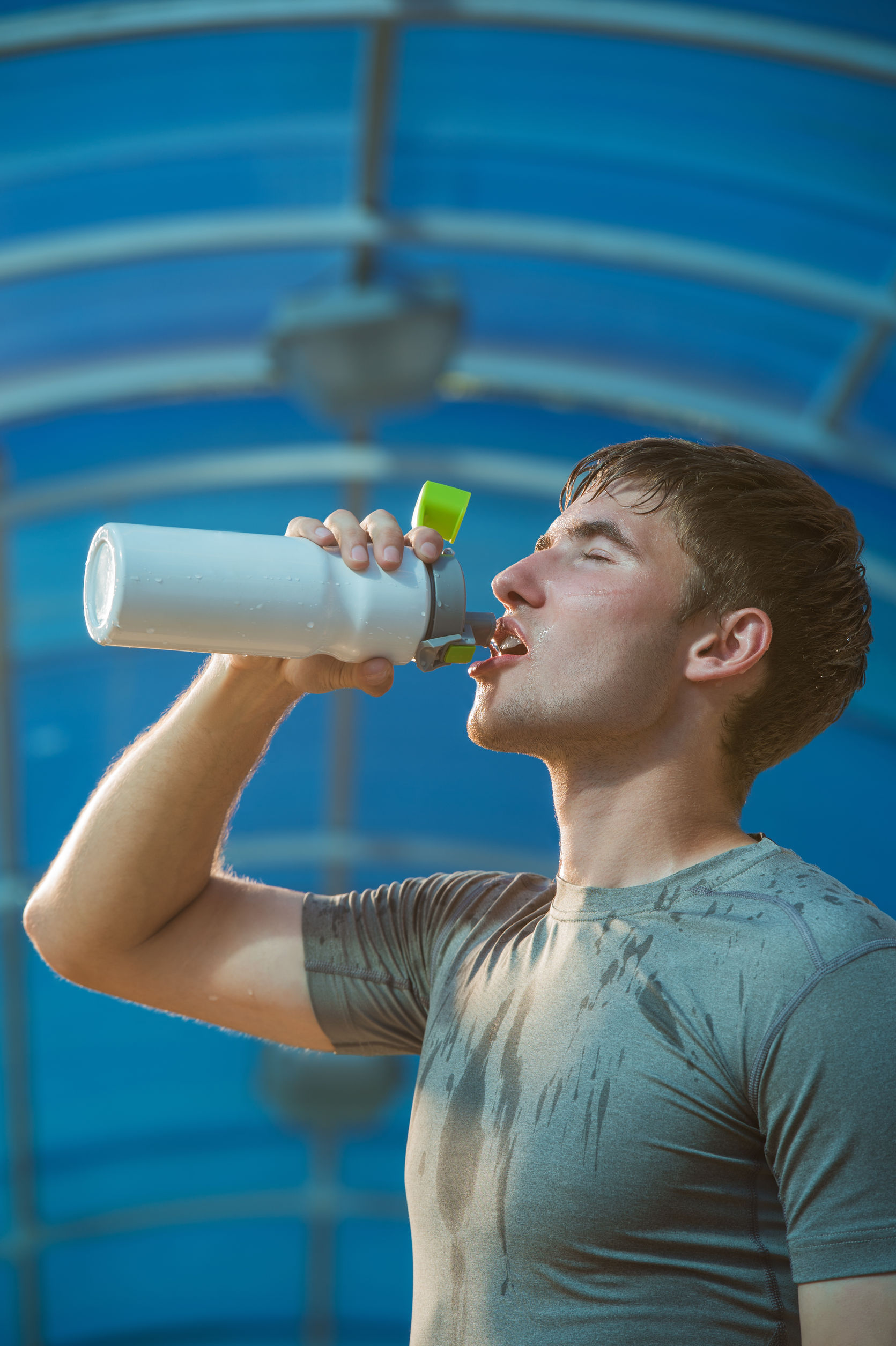Excessive sweating can hide serious illnesses.

In general, it is normal to sweat more than usual when the warm season is when the ambient temperature is increased or when we endure a physical exercise (sports, domestic activities). But when excessive sweating occurs even under normal temperature conditions and ordinary activities, then we talk about hyperhidrosis. This may be primary (idiopathic) or secondary to other conditions. Dermatologist Anca Proca explains why CSID appears and can be the remedy for excessive sweating. Types of hyperhidrosis Primary hyperhidrosis affects approximately 1-3% of the population and is classified according to localization in: cranio-facial, axillary, palmo-plantar or mixed hyperhidrosis. Cranio-facial hyperhidrosis (excessive sweating in the scalp and face) can have strong psycho-social implications.
The appearance of perspiration during the sessions, during an interview, of a speech, can be felt to be an extremely embarrassing situation for both the patient and those around him. Severe hyperhidrosis affects the patient's life and makes his social and professional contacts difficult. Unlike palmo-plantar and axillary hyperhidrosis, cranio-facial hyperhidrosis is harder to conceal and treat. Anyone suffering from hyperhidrosis should first consult a doctor to get complete medical check-up and to ensure that excessive sweating is not due to another medical condition or side effect of a drug, and then we talk about secondary hyperhidrosis. Secondary hyperhidrosis may indicate a more serious health problem and should always be considered for the first time.
This condition may be secondary to the following conditions: cancer (due to increased metabolic processes) anxiety disorders analgesic medication (pain treatments) antidepressant medication hyperthyroidism cardiac disorders hyperglycemia pulmonary emphysema menopause (hormonal fluctuations) Parkinson's disease pheochromocytoma (gland tumor . It seems that sweat glands in certain areas are hyperactive or hypersensitive to the sympathetic stimuli of the vegetative nervous system. Most patients have a family history (at least one family member suffers from hyperhidrosis), suggesting the involvement of a genetic factor in the etiology of this condition. The disorder may have periods of rest or exacerbation and can be maintained by factors such as stress, anxiety (fear, restlessness), eating spicy foods, nicotine (smoking) or caffeine. Treatment for hyperhidrosis The cranio-facial focal hyperhidrosis treatment plan will be similar to that used in other areas of the body where excessive sweating is predominant.
In the first phase, it is recommended to use products that apply locally to the skin in the sweat area (topical solutions), such as common antiperspirants containing aluminum chloride (avoid contact with eyes). As with other areas of the body, strong antiperspirant products can irritate the skin of the face, head or scalp, and in the case of spray solutions there is a risk that they may get into the eye and cause eye irritation. If topical antiperspirant solutions do not work or are not tolerated, botulinum toxin (Botox) injections are recommended,. A side effect of the injections may be asymmetry, especially of the forehead. This can happen if part of the toxin diffuses into the facial muscles.
Asymmetry is, however, temporary and, if necessary, can be balanced by additional injections of Botox. Some patients also have migraines. However, because of side effects (dry mouth, blurred vision, constipation), they can not be administered in the long term. However, they may be useful for those people who have an important presentation or job interview and want to temporarily treat hyperhidrosis to prevent discomfort. A long-term solution can be endoscopic thoracic sympathectomy, by which the nerves responsible for the occurrence of hyperhidrosis are burned, cut or clogged.
However, this variant remains viable only if the other variants are not satisfactory and the patient experiences a discomfort, and this is because, after this surgery, excessive sweating may occur in other areas of the body, . It is advisable to avoid light-colored clothing, especially white ones, which show a stronger sweat than dark clothes and those of synthetic materials that do not allow the air to penetrate through the fabric and prevent the evaporation of the sweat. Sage tea or zinc supplements can help reduce the amount of sweat. .
Source : csid.ro
Views : 3013
Popular Article
- (photo) Nude becomes art.
Posted: 2018-03-17, 9591 views.
- The harmful effects of air conditioning on the skin
Posted: 2017-06-08, 8274 views.
- 3 causes of dyed hair discoloration
Posted: 2017-06-15, 8146 views.
- Why early puberty occurs in girls: symptoms, favors, diagnosis and treatment
Posted: 2017-10-24, 8003 views.
- Good or bad skin treatments in the hot season
Posted: 2017-06-07, 7740 views.
Recommendations
- (photo) Nude becomes art.
Posted: 2018-03-17, 9591 views.
- The harmful effects of air conditioning on the skin
Posted: 2017-06-08, 8274 views.
- 3 causes of dyed hair discoloration
Posted: 2017-06-15, 8146 views.
- Good or bad skin treatments in the hot season
Posted: 2017-06-07, 7740 views.
- Risks of practicing sports on hot days
Posted: 2017-06-12, 7335 views.
 4 effective ingredients in the fight against acne.
4 effective ingredients in the fight against acne. How to get rid of hiccups fast
How to get rid of hiccups fast The wheat bran diet: the secret of lost pounds as if by magic
The wheat bran diet: the secret of lost pounds as if by magic The recipe that will sweeten your soul this weekend!
The recipe that will sweeten your soul this weekend!  Is it dangerous or not to refreeze meat after thawing it?
Is it dangerous or not to refreeze meat after thawing it?  The unusual sign of diabetes indicated by saliva.
The unusual sign of diabetes indicated by saliva. What to drink to boost your immune system.
What to drink to boost your immune system. 10 foods that help you never age.
10 foods that help you never age. What actually happens in your body if you drink a cup of coffee for breakfast
What actually happens in your body if you drink a cup of coffee for breakfast 5 surprising benefits of chia seeds
5 surprising benefits of chia seeds